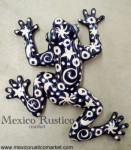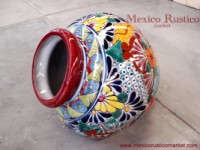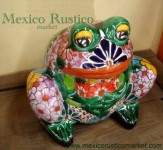The History of Talavera
The art of creating ceramics and decorating it by hand with bright colors made from natural minerals, dates from the 8th Century when The Arab Nations occupied many portions of Europe, particularly Spain.
The discovery of the appropriate natural resources which were incorporated into a strong culture attracted the potters to the country of Spain and in particular the city of Talavera de la Reina. It did not take long for the city to become the cultural center for the creation of ceramics along with creating one of the largest exporters in Europe for these crafts.
The contemporary version of this craft takes its name, “Talavera,” from the original city that fostered this beautiful product so long ago. The Talavera style ceramics flourished in Spain and found its golden age during the 17th Century. During the 19th Century, the production and usage of this style of pottery declined compared to previous decades. In the 20th Century its popularity grew because of its distinctive decoration and durability for everyday usages. During this period, the patterns of decoration and colors used to paint diversified greatly to what we see in contemporary “Talavera” products. As with all distinctive pottery the firing process and glazing is what makes "Talavera” separate from other collectible ceramics.
The glazing is executed in "tricolor" series which includes tracing the ceramic with black (magnesium mineral), and adding the green and orange colors. The Spaniards used the Arab technique to bake ceramic at high temperatures making it more durable. The beginning of the 18th Century changed the basic colors to white and blue, which evolved into the classic blue and pale-blue decoration on a white background. During the 19th Century, the production and usage of this style of pottery declined compared to previous decades. In the 20th Century its popularity grew because of its distinctive decoration and durability for everyday usages. During this period, the patterns of decoration and colors used to paint diversified greatly to what we see in contemporary “Talavera” products.
The colonization of the Americas during the 16th century relocated the art form to Mexico. Eventually, Mexican Artisans refined the process to become their form of pottery and actually create a more artistic process.
MAIN
FURNITURE
TALAVERA
POTTERY
BLOWN GLASS
LOCATION
All rights reserved MMIX.


